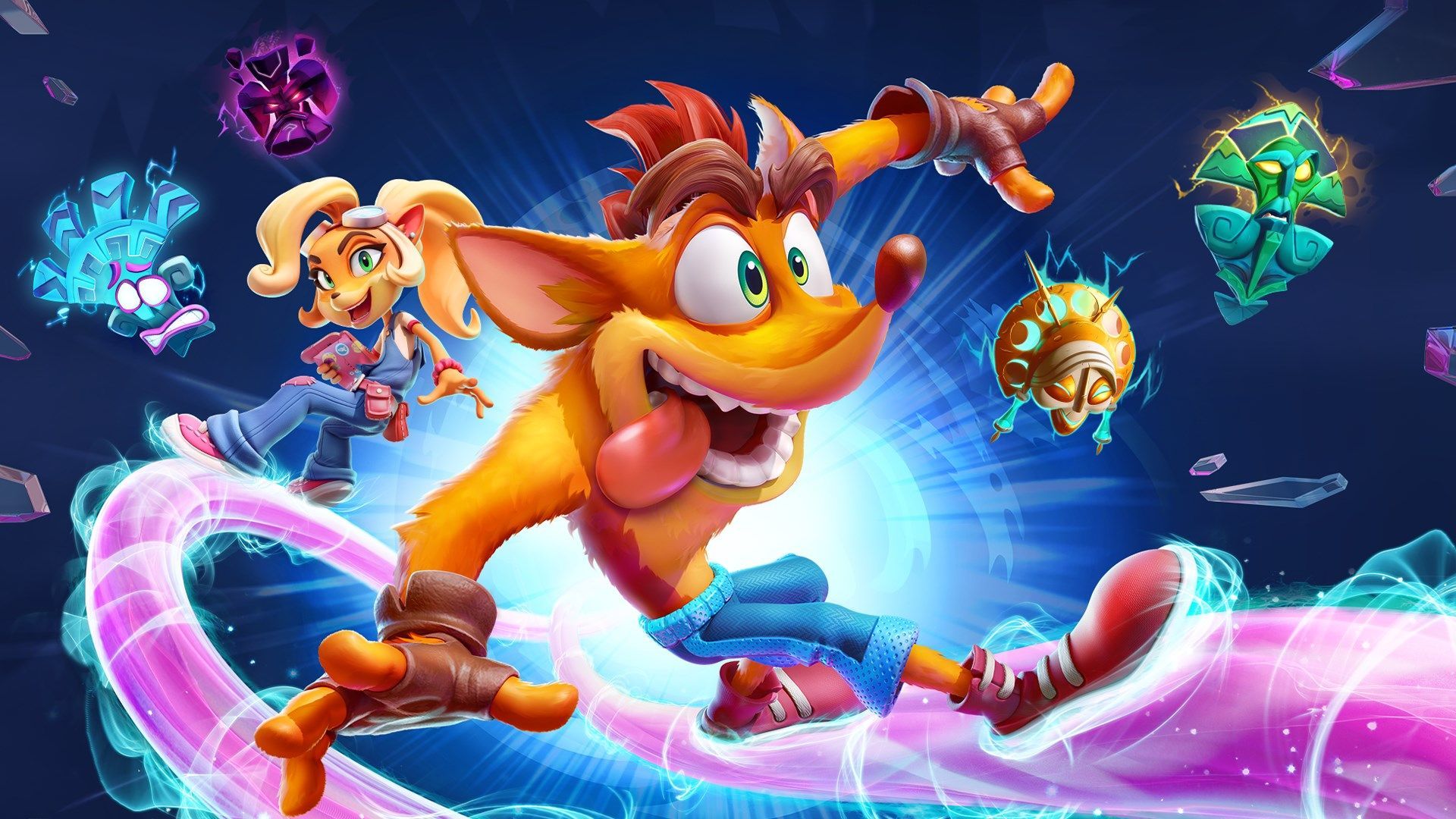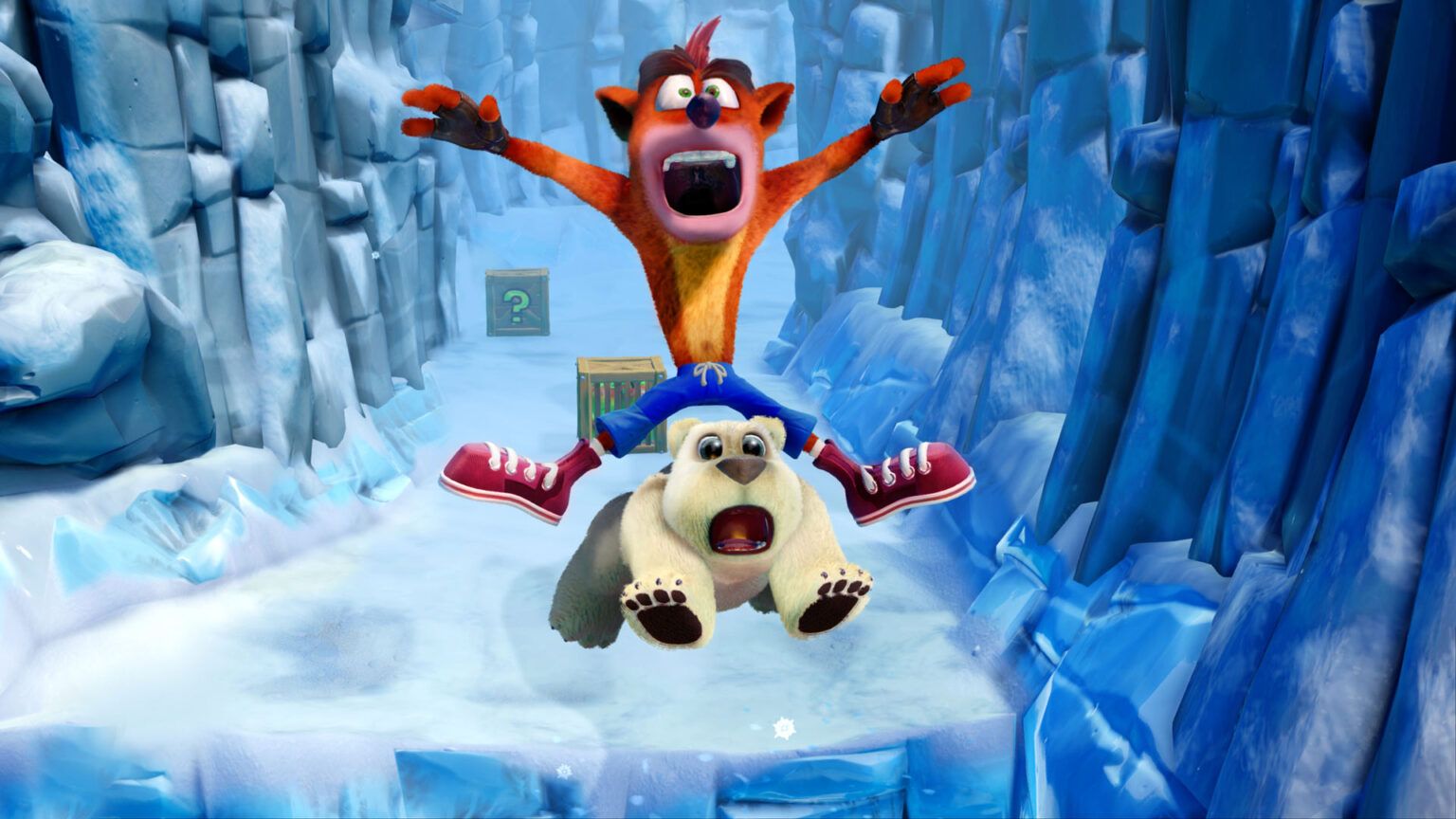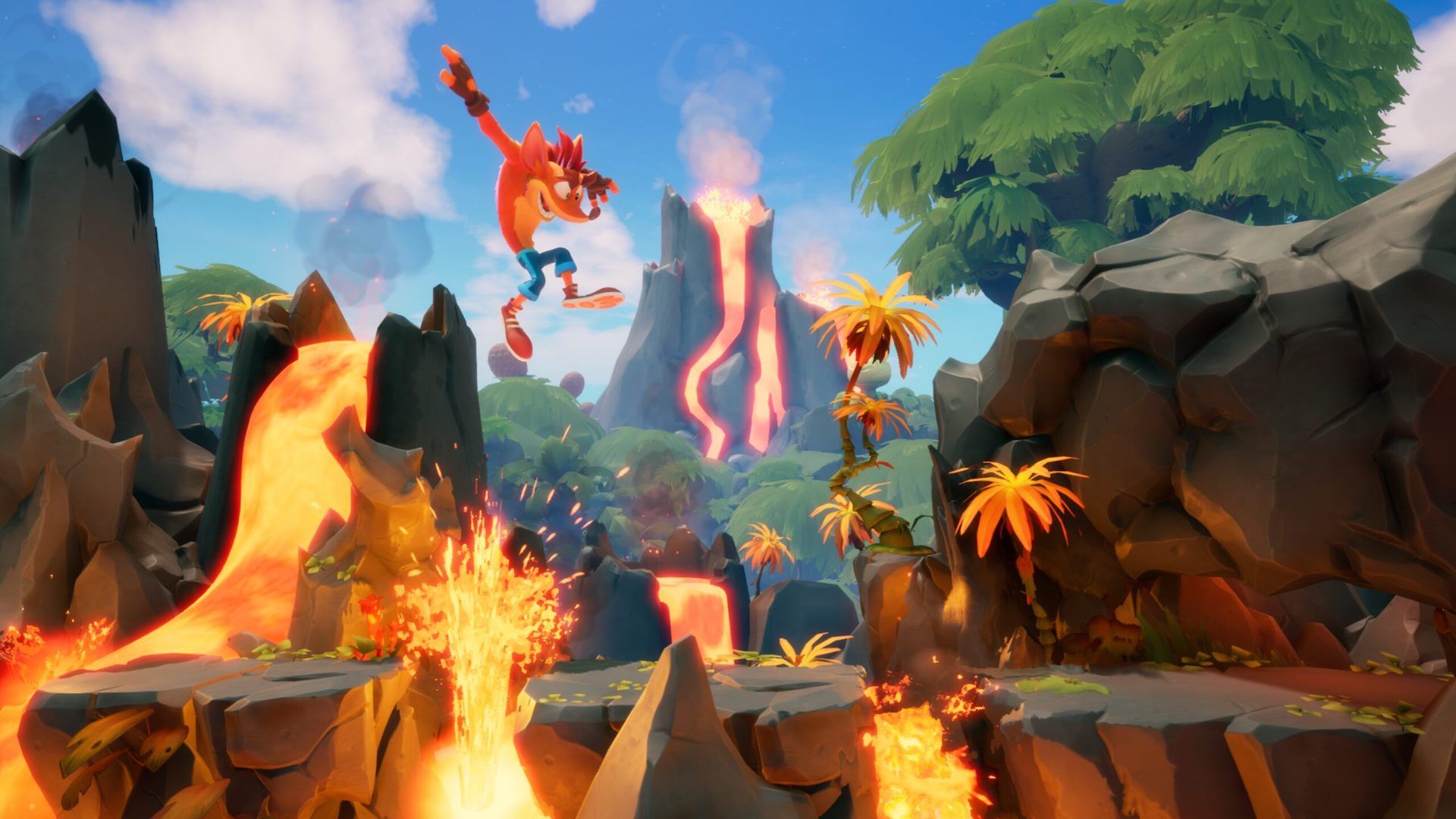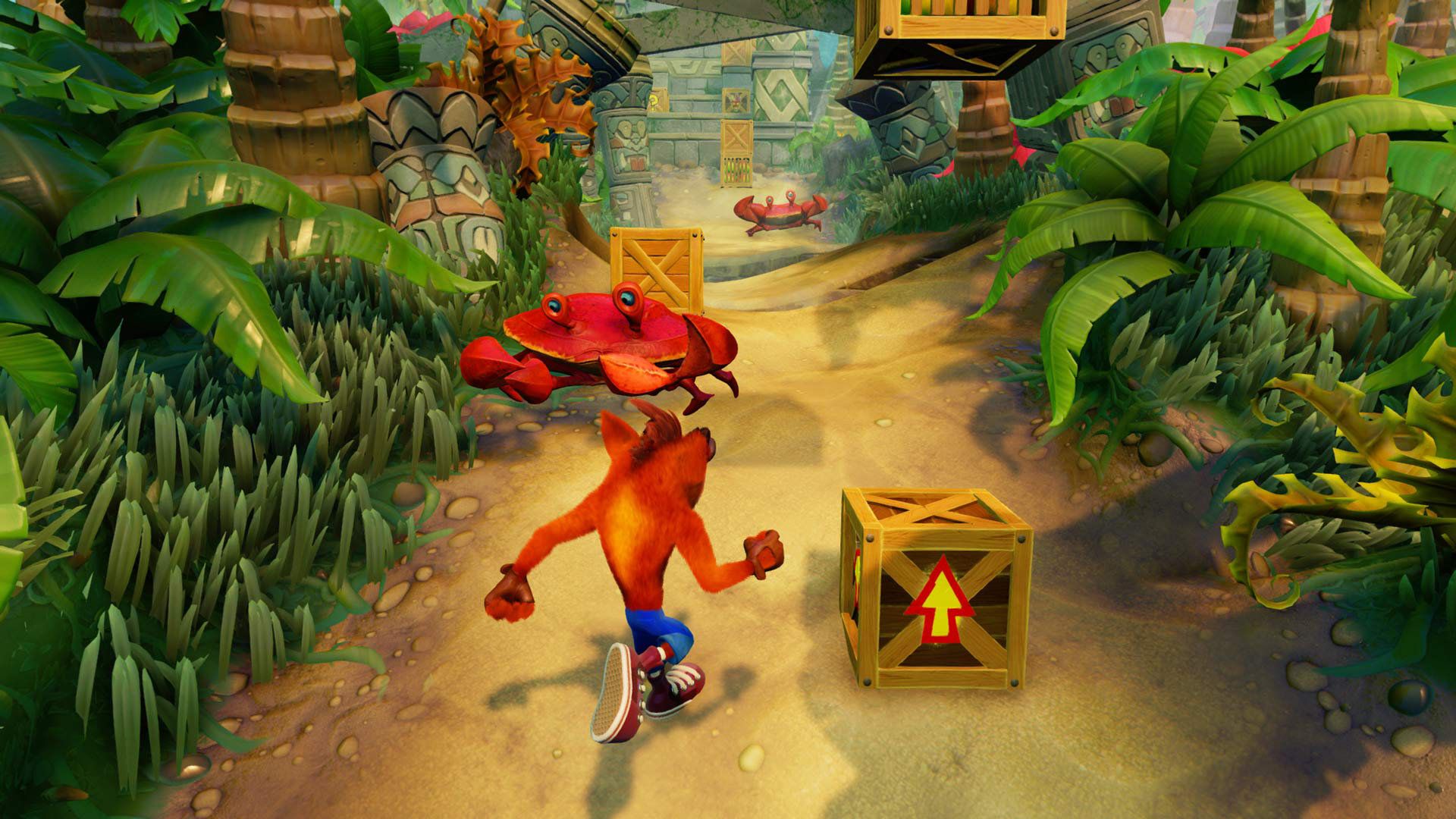Loving to Hate Crash Bandicoot
Crash Bandicoot 4's release on PlayStation Plus is a reminder of why I keep playing a series I seldom enjoy

It took 28 deaths for me to defeat Dr. Cortex in Crash Bandicoot 4: It's About Time. At first glance, the boss should have been a pushover. Compared to the other fights thus far, most of which have multiple phases or a degree of randomness, the Cortex fight is straightforward.
He uses one of five attacks: targeting missiles, green, purple, and red energy attacks, and a punching robot. Spin attacking the latter is the only means of inflicting damage to Cortex, who sits in the cockpit of his blimp. Although the missiles home into Crash, the rest of Cortex's attacks follow the same patterns, making the boss more of a challenge of repetition than reflexive dexterity.
Or so you'd think.
Through 28 deaths I not only learned the pattern, but also something about myself. I can't stand Crash Bandicoot games.

For a bit of context, I first played the Crash series on the original PlayStation. Crash Bandicoot 2: The Wrath of Cortex served as my introduction, though I didn't have a memory card, so never managed to beat the game.
At their core, modern Crash games play now as they did then. Levels are a mix of hallway-like 3D areas and 2D side-scrolling sections. Crash himself has all the tools you’d expect: a jump of varying heights, a spin attack, a slide, and a ground pound, which in keeping with the character's wacky tone, is a fully committed faceplant.
Though many platformers have a similar move-set, I’ve never been good at Crash games. Memory card issues aside, I’ve still never seen beyond the third world of Crash Bandicoot 2. Despite clearly being something of a children’s game, Crash’s developers pulled no punches with the game’s difficulty. The original is punishingly difficult and is made excruciatingly more so without the damage-dealing slide tackle and high jump found in subsequent entries.
The sequel, while a bit more forgiving, still raises issues with its platforming, which is less straightforward than other games like it. As 3D platformers, the main four Crash Bandicoot games lack true camera control. At the time of release for the original trilogy, cameras with little to no control were common but Crash’s camera placement, which is almost always fixed behind the bandicoot in 3D space, creates issues with judging depth.

The problem was certainly considered by Toys for Bob, who developed the fourth game almost 22 years after Naughty Dog's original trilogy, as they included a highlighted drop shadow to indicate the character’s landing space. Still, small platforms lend themselves to overshooting jumps, which in turn leads to countless deaths and mounting frustration. A stark emotional contrast for a series that is always so visually and musically joyful.
If platforming is an issue, surely that joy can be found in the game's objectives, right? Platformers from the 90s were built around the lure of collectibles, in which players sought after countless MacGuffins to progress the story. Donkey Kong had bananas and "KONG" letters, Sonic had rings and Chaos Emeralds. MegaMan sought after energy tanks and the hardware of his enemies.
Crash, however, collects Wumpa Fruit, which are seemingly a cross between a mango and an apple, with a gradient red-green skin. In the original games (or in classic mode in the fourth game), Wumpa were like any other platform game staple — collect 100, earn a life. Given Crash Bandicoot’s often punishing difficulty, an extra play is always welcome.
Then there are boxes, which sport their own tally for each level. Obliterate all of a level’s boxes and you earn a box gem (or a skin in Crash 4). These gems are keys to 100% completion, but if you’re not a diehard completionist, the choice to hunt down crates becomes a chore.
Taken with the Crash series’ fixed camera, crate placement is an exercise in exhausting every possibility when canvassing a level, and managing to do so without dying before reaching a checkpoint. Crates are regularly obscured by level scenery or placed just out of frame, so some are best found through trial and error.

And through all the trouble, neither crates nor fruit really add up to a better time playing. I don’t need every game to provide a firm reward for collecting its collectibles. Celeste did wonders with making its flying strawberries and crystal hearts optional but supremely rewarding when found, aided by the impermanence of missing them. Cause a berry to fly off-screen? Simply reset the room.
Some of Crash’s gems, however, are maddening. The first that comes to mind is Crash Bandicoot 2’s Turtle Woods, which features a hidden blue gem unlocked by reaching the end of the level without breaking any boxes. That’s the exact opposite of what the game has been conditioning players to do.
Through all of the rage quits and long-term breaks at the behest of questionable design choices, I can’t help but return to the series for a semi-regular spiritual beatdown. Beating levels doesn't provide a jolt of excitement to tackle the next challenge, but rather a sense of pride that I managed to persevere through a game that can be difficult for all the wrong reasons.
Recently, Elden Ring has shown me what it is to reward perseverance with a sense of accomplishment. Stepping away from the game after being bullied by the notoriously difficult Radahn's unwieldy combos and magic attacks (surprise, he’s a meteor now!), only to come back on a random afternoon and topple him, is fulfilling.
Crash, however, tests my patience. I don’t have the luxury of choosing some other level or area to while away the time as I prepare for the next. The series is steeped in the pre-millennium design philosophy of challenging, almost cryptic gaming - the type of design that fueled strategy guide sales and GameFAQ pages. Beating a level in Crash Bandicoot can be mentally taxing and finger cramp-inducing, but life counter aside, my pride says I’d be crazy not to try again.
